Enacting translanguaging in a Ghanaian multilingual classroom
Code choices in minority language classrooms
DOI:
https://doi.org/10.36950/lpia-01-01-2025-7Keywords:
translanguaging, multilingualism, bilingual education, semiotic and linguistic resources, Santrokofi, GhanaAbstract
The present study addresses translanguaging as a theory that unravels the deployment of linguistic and semiotic resources for communication by monolinguals, bilinguals, and multilinguals. Secondly, it explores translanguaging as a linguistic practice with unique characteristics and functions. In the multilingual classroom, translanguaging has been used strategically or spontaneously as a pedagogical tool for effective instruction and other educational ends. The present case study is conducted in Santrokofi in Ghana and sought to examine translanguaging as a pedagogic tool in a multilingual classroom that is constrained by a bilingual education policy. Using classroom observation, interviews, and focus group interviews, the present study highlights the nature and the functions of translanguaging that takes place in the multilingual classroom. The findings of the study affirmed earlier findings that the multilingual classroom is an important site for translanguaging. Again, translanguaging practices that were observed in the classroom included translation, code-switching, repairing, and deployment of a cocktail of linguistic and semiotic resources and modalities to enhance understanding, explain concepts, and facilitate home-school cooperation. The study also identified negative attitudes of teachers and the marginalization of learners’ mother tongue as constraints to effective translanguaging and proposes a reexamination of Ghana’s language-in-education policy and teacher reorientation and training as ways of reversing teachers’ negative attitudes in order to maximize translanguaging in the multilingual classroom.
Downloads
References
Agbetsoamedo, Y. (2014). Noun classes in Sɛlɛɛ. Journal of West African Languages, 41(1), 95-124. https://journalofwestafricanlanguages.org/downloads/download/119-volume-41-number- 1/615-noun-classes-in-s-l
Agbozo, G. E. & ResCue, E. (2021). Educational language policy in an African country: Making a place for code-switching/translanguaging. Applied Linguistics Review, 12(4), 503-522. https://doi.org/10.1515/applirev-2020-2002
Ansah, G. N. (2014). Re-examining the fluctuations in language-in-education policies in post-independence Ghana. Multilingual Education, 4, 1-15. https://doi.org/10.1186/s13616-014-0012-3
Bagwasi, M. M. (2016). A critique of Botswana’s language policy from a translanguaging perspective. Current Issues in Language Planning. http://dx.doi.org/10.1080/14664208.2016.1246840.
Baker, C. (2011). Foundations of bilingual education and bilingualism. Multilingual Matters.
Baynham, M. & Lee, T. K. (2019). Translation and Translanguaging. Routledge, Taylor & Francis Group.
Bourdieu, P. (1977). Outline of a Theory of Practice. Cambridge University Press.
Canals, L. (2021). Multimodality and translanguaging in negotiation of meaning. Foreign Language Annals, 1-24. https://doi.org/10.1111/flan.12547
Cenoz, J. & Gorter, D. (2017). Minority languages and sustainable translanguaging: Threat or opportunity? Journal of Multilingual and Multicultural Development, 38(10), 902-912. https://doi.org/10.1080/01434632.2017.1284855
Creese, A. & Blackledge, A. (2010). Translanguaging in the bilingual classroom: A pedagogy for learning and teaching? Modern Language Journal, 94. 103-115. https://doi.org/10.1111/j.1540-4781.2009.00986.x
Davidson, C. (2009). Transcription: Imperatives for Qualitative Research. International Journal of Qualitative Methods, 8(2), 35-52. https://doi.org/10.1177/160940690900800206
Fraenkel, R. J. & Wallen, N. E. (2000). How to design and evaluate research in education (4th ed.). McGraw-Hill.
García, O. (2011). Educating New York’s bilingual children: constructing a future from the past. International Journal of Bilingual Education and Bilingualism, 14(2), 133-153. https://doi.org/10.1080/13670050.2010.539670
García, O. & Leiva, C. (2014). Theorizing and Enacting Translanguaging for Social Justice. In A. Blackledge & A. Creese (Eds.), Heteroglossia as Practice and Pedagogy (pp. 199-216).
García, O. & Wei, L. (2014). Translanguaging: Language, bilingualism, and education. Palgrave Macmillan.
García, O. & Kleyn, T. (2016). A translanguaging educational project. In O. García & T. Kleyn (Eds.), Translanguaging with multilingual students: Learning from classroom moments (pp. 34-54). Routledge, Taylor & Francis Group.
Gee, J. P. (1999). An introduction to discourse analysis: Theory and method. Routledge, Taylor & Francis Group.
Greeff, M. (2005). Information collection: Interviewing. In A.S. de Vos, H. Strydom, C.B. Fouché, & C.S.L. Delport (Eds.), Research at grass roots: For the social sciences and human service professions (3rd ed., pp. 286-313). Van Schaik Publishers.
Hedger, R. & Wicaksono, R. (2015). Learning, Teaching and Assessment in Multilingual Classrooms. In J. Angouri, T. Harrison, S. Schnurr, & S. Wharton (Eds.), Learning, Working and Communicating in a Global Context Proceedings of the 47th Annual Meeting of the British Association for Applied Linguistics 4-6 September 2014 University of Warwick, Coventry (pp. 53-65). Scitsiugnil Press.
Hawkins, R. M. (2020). Toward critical cosmopolitanism: Transmodal transnational engagements of youth. In E. Moore, J. Bradley, & J. Simpson (Eds.), Translanguaging as Transformation: The Collaborative Construction of New Linguistic Realities (pp. 23-40). Multilingual Matters.
Hua, Z., Wei, L., & Lyons, A. (2017). Polish shop(ping) as Translanguaging Space. Social Semiotics, 27(4), 411-433. https://doi.org/10.1080/10350330.2017.1334390.
Jones, B. & Lewis, G. (2014). Language arrangements within bilingual education. In E. M. Thomas & I. Mennen (Eds.), Advances in the Study of bilingualism. Multilingual Matters.
Kramsch, C. (2015). Applied linguistics: A theory of the practice. Applied Linguistics, 36(4), 454-465. https://doi.org/10.1093/applin/amv039
Lewis, G., Jones, B., & Baker, C. (2012). Translanguaging: Origins and development from school to street and beyond. Educational Research and Evaluation, 18(7), 641-654. https://doi.org/10.1080/13803611.2012.718488
Mann, S. (2011). A critical review of qualitative interviews in applied linguistics. Applied Linguistics, 32(1), 6-24. https://doi.org/10.1093/applin/amq043
Maturana, H. & Varela, F. (1998). The Tree of Knowledge: The Biological Roots of Human Understanding. Shambhala/New Science Library.
Pennycook, A. (2010). Language as local practice. Routledge, Taylor & Francis Group.
Scollon, R. (2001). Mediated Discourse: The nexus of practice. Routledge, Taylor & Francis Group.
Scollon, R. & Scollon, S. W. (2004). Nexus Analysis: Discourse and the emerging Internet. Routledge, Taylor & Francis Group.
Wei, L. (2018). Translanguaging as a practical theory of language. Applied Linguistics, 39(1), 9-30. https://doi.org/10.1093/applin/amx039
Yevudey, E. (2015). Translanguaging as a language contact phenomenon in the classroom in Ghana: Pedagogic relevance and perceptions. In J. Angouri, T. Harrison, S. Schnurr, & S. Wharton (Eds.), Learning, Working and Communicating in a Global Context Proceedings of the 47th Annual Meeting of the British Association for Applied Linguistics 4-6 September 2014 University of Warwick, Coventry (pp. 259-270). Scitsiugnil Press.
UNESCO. (1953). The use of vernacular languages in education. Report of the UNESCO Meeting of Specialists (1951). Monograph on Fundamental Education VII. Paris: UNESCO.
Published
Issue
Section
License
Copyright (c) 2025 David Dankwa-Apawu, Yvonne Agbetsoamedo , ELVIS RESCUE

This work is licensed under a Creative Commons Attribution 4.0 International License.


